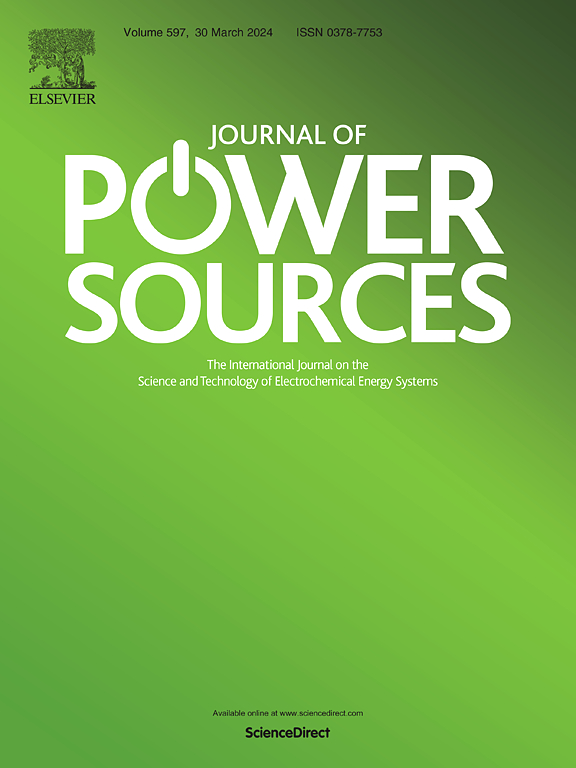Adsorption thermodynamics of methane reforming over solid oxide fuel cell anodes
IF 7.9
2区 工程技术
Q1 CHEMISTRY, PHYSICAL
引用次数: 0
Abstract
Adsorption kinetics and thermodynamics on nickel base anode materials remain underexplored under reforming conditions when fuelled directly with methane. The kinetics determine how quickly and effectively reactant gases interact on the anode surfaces, affecting the behavior of subsequent electrochemical reactions. However, the complexity of these interactions under operating conditions have led to a limited number of detailed studies in this area. Thus, further investigation into adsorption kinetics could unlock new possibilities for optimizing fuel cell performance. This study examines the adsorption Gibbs free energy of reactants on the anode in solid oxide fuel cell to assess the electrocatalyst activity. Our findings reveal that H2O exhibits more favorable adsorption conditions than CO2 on the catalyst surface, and increased temperature and current density lead to different surface adsorption behaviours. The results show that steam reforming prevents coke formation on the fuel cell anode more effectively than dry reforming. This proposed method can also be used to examine the coke resistance and the performance of anode structures during the investigation and development stages for fuel cell research. The study provides valuable insights into anode performance and offers a foundation for future advancements in SOFC technology.

固体氧化物燃料电池阳极上甲烷重整的吸附热力学
在直接以甲烷为燃料的重整条件下,镍基负极材料的吸附动力学和热力学研究尚不充分。动力学决定了反应物气体在阳极表面上的相互作用有多快和多有效,从而影响后续电化学反应的行为。然而,在操作条件下,这些相互作用的复杂性导致该领域的详细研究数量有限。因此,对吸附动力学的进一步研究可以为优化燃料电池性能提供新的可能性。研究了固体氧化物燃料电池阳极上反应物的吸附吉布斯自由能,以评价其电催化剂的活性。研究结果表明,H2O在催化剂表面表现出比CO2更有利的吸附条件,温度和电流密度的增加导致了不同的表面吸附行为。结果表明,蒸汽重整比干式重整更能有效地防止燃料电池阳极结焦。该方法也可用于燃料电池研究和开发阶段阳极结构的抗焦性和性能的检验。该研究为阳极性能提供了有价值的见解,并为SOFC技术的未来发展奠定了基础。
本文章由计算机程序翻译,如有差异,请以英文原文为准。
求助全文
约1分钟内获得全文
求助全文
来源期刊

Journal of Power Sources
工程技术-电化学
CiteScore
16.40
自引率
6.50%
发文量
1249
审稿时长
36 days
期刊介绍:
The Journal of Power Sources is a publication catering to researchers and technologists interested in various aspects of the science, technology, and applications of electrochemical power sources. It covers original research and reviews on primary and secondary batteries, fuel cells, supercapacitors, and photo-electrochemical cells.
Topics considered include the research, development and applications of nanomaterials and novel componentry for these devices. Examples of applications of these electrochemical power sources include:
• Portable electronics
• Electric and Hybrid Electric Vehicles
• Uninterruptible Power Supply (UPS) systems
• Storage of renewable energy
• Satellites and deep space probes
• Boats and ships, drones and aircrafts
• Wearable energy storage systems
 求助内容:
求助内容: 应助结果提醒方式:
应助结果提醒方式:


